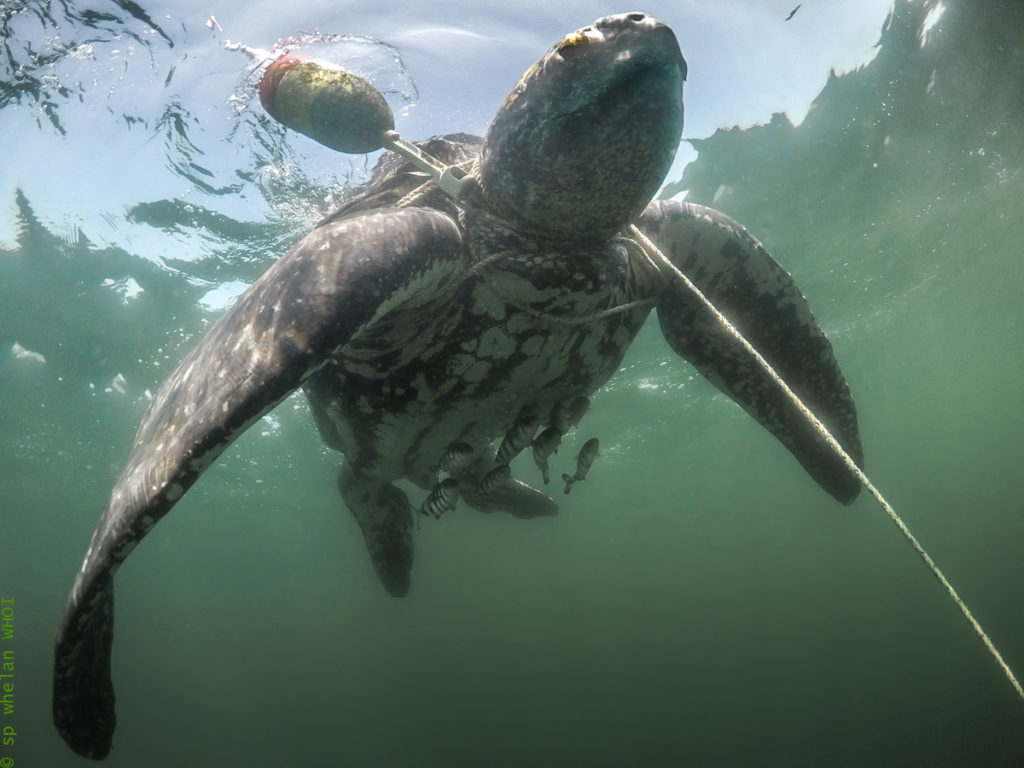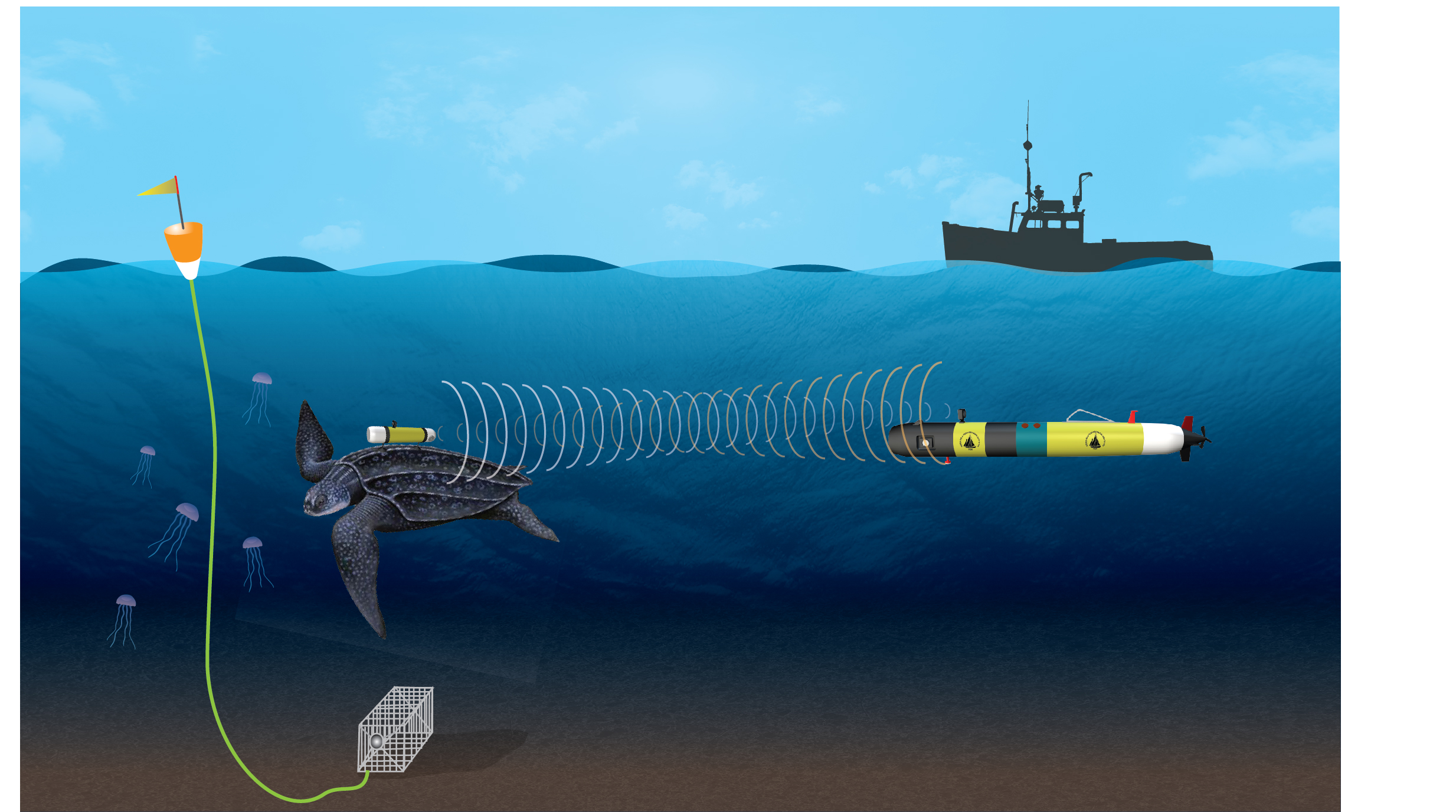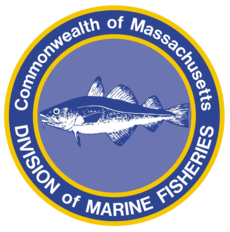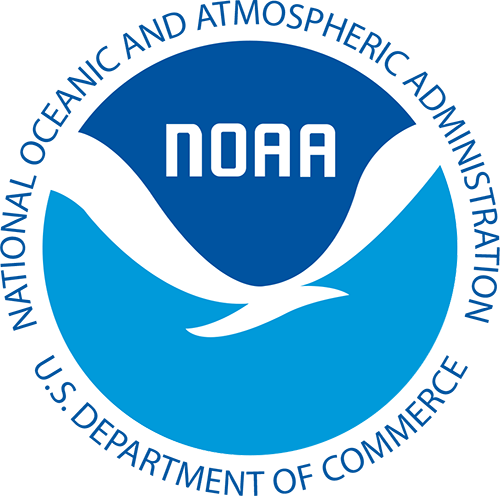Habitat sampling and subsurface observations of leatherback turtles with an autonomous underwater vehicle (AUV) 'TurtleCam'
Collaborators: A. Kukulya, E. Burke & M. Baumgartner
Despite significant progress in the management of pelagic fisheries with respect to sea turtle bycatch, the impact of coastal fisheries on sea turtles remains poorly studied. In shelf waters off the Northeast USA, fixed gear fisheries and aquaculture operations overlap with important leatherback turtle (Dermochelys coriacea) foraging habitat, and entanglement in buoy lines is a well-documented source of leatherback injury and mortality (Figure 1). Attempts to address this source of bycatch through gear modifications have been hindered by a lack of empirical information on turtle behavior in the vicinity of fixed fishing gear.

Figure 1. Leatherback turtle entangled in the buoy line of pot gear off Cape Cod, Massachusetts. Photo by Sean P. Whelan/WHOI
Recent advancements in autonomous underwater vehicles (AUVs) now make it possible to study the subsurface behaviors of sea turtles. To investigate leatherback fine-scale behavior in gear-dense habitat off Cape Cod, Massachusetts, USA, we tagged and followed leatherback sea turtles with a REMUS-100 AUV from 2016 - 2017 (Figure 2). The AUV was equipped to locate, follow and film the tagged turtles, collecting footage with six high definition video cameras. We also used an animal-borne transponder affixed with cameras to record behavior from the turtle's perspective. Since turtle behavior is likely a response to habitat factors, we collected concurrent in situ oceanographic data (temperature, salinity, chlorophyll fluorescence). Data are currently being analyzed to characterize the diving behavior and foraging ecology of leatherback turtles and to assess how diving behavior mediates entanglement risk. Our study demonstrates that an AUV can successfully track and image leatherback sea turtles feeding in a coastal environment, resulting in new observations of three-dimensional subsurface behaviors and habitat use.

Figure 2. A foraging leatherback turtle being tracking by the 'TurtleCam' AUV near fixed fishing gear. The turtle has a suction-cup mounted transponder on its back that communicates acoustically with the AUV.
Funding Agencies
The National Ocean and Atmospheric Administration funded this research through the Species Recovery Grants to States program. Additional support for TurtleCam has been provided by Jean Tempel, Hydroid Inc., and over 100 ProjectWHOI donors.


Partners/Collaborators
This is a joint project with the Massachusetts Division of Marine Fisheries.
Related Links
TurtleCam in the News!
- NOAA Fisheries Feature on TurtleCam
- Oceanus Magazine 'To Track a Sea Turtle'
- TurtleCam field work in Boston Globe
- TurtleCam field work in Cape Cod Times
- TurtleCam pilot study in Cape Cod Times
- Oceanus Magazine TurtleCam video
- Talking TurtleCam on NPR
- TurtleCam fundraising in Cape Cod Times
- Crowdfunding TurtleCam in Boston Globe
- Discovery Channel on TurtleCam
Research Papers
- More coming soon!
- Studying sea turtles with smart AUVs in Frontiers in Marine Science